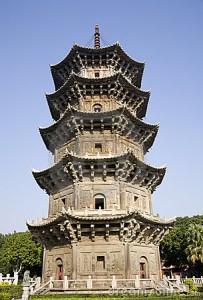![]()
 Traditional Chinese Medicine associates hyperplasia (enlargement) of the prostate with damp heat and kidney deficiency. After the age of 40, men’s vital energy in the kidney system decreases, resulting in a disturbance of the sex hormones. Sexual energy decreases, affecting circulation in this area and the function of the prostate. To compensate for the decline of prostate function, men in China have historically used herbal or acupuncture treatments to improve the circulation and energy in the prostate.
Traditional Chinese Medicine associates hyperplasia (enlargement) of the prostate with damp heat and kidney deficiency. After the age of 40, men’s vital energy in the kidney system decreases, resulting in a disturbance of the sex hormones. Sexual energy decreases, affecting circulation in this area and the function of the prostate. To compensate for the decline of prostate function, men in China have historically used herbal or acupuncture treatments to improve the circulation and energy in the prostate.
The American Cancer Society classifies prostate cancer as the most common form of cancer among U.S. men. If you are a man over the age of 40 and prostate cancer runs in your family, it is advisable to monitor your Prostate Specific Antigen (PSA) levels. A PSA blood test measures the level of a protein released by prostate cells which can reveal prostate growth and sometimes cancer. The main symptoms of an enlarged prostate are weak urine flow, straining to urinate, and the feeling of incomplete bladder emptying.
Chinese herbal therapy and acupuncture can help normalize PSA levels. Many times traditional Chinese herbal formulas are prescribed, like: Prostate Comfort Pill: Qian Lie Shi Wan or Qian Lie Tong Jiao Nang “Prostate Gland Pills” . Kidney essence revitalizes the prostate so that it becomes capable of self-regulating toward normal functioning.
To help nourish the prostate, Chinese medicine encourages men to eat more nuts, seeds, pumpkin, mushrooms and berries. Managing stress, regular exercise and massaging the prostate are also vital for maintaining prostate health. Besides Chinese and Western herbs such as saw palmetto, many delicious foods help maintain a healthy prostate because they contain lycopene, a prostate protective antioxidant. These foods include watermelon, pink grapefruit, guava, papaya, apricot and cooked tomatoes.
Main Points of Diagnosis
1. It occurs mostly in aged people who are over 50.
2. Symptoms:
1) Frequent urination: This is a symptom at the early stage of the disease. Gradually, the frequency of urination increases, which is obvious especially at night. In mild cases the urination will happen 4-5 times a night and in serious cases it may occur dozens of times.
2) Difficulty of urination: At the beginning, the patient has to wait for a while before urination. Later on, the obstruction condition becomes more serious, accompanied with difficulty in urination or even dribbling in urination.
3) Acute Uroschesis: This symptom is due to factors such as constipation, cold, alcoholic drinking and weariness which can cause hyperemia and hydrops of the neck of the urinary bladder. Complete obstruction may be formed and acute uroschesis will result.
4) Urinary Incontinence: When the filling of the urinary bladder reaches an extreme state and the intravesical pressure becomes higher than the resistance of the sphincter muscle of urethra, urine will dribble out continuously from the urethra. This phenomenon is called pseudo-uroschesis.
5) Hematuria: Because of the hyperemia of the neck of urinary bladder, sometimes, hematuria may be found under microscopy or even by gross inspection.
6) Complications: On the one hand, urinary obstruction for a long time may lead to other sicknesses like decrease of renal functions or even renal failure, manifested as loss of appetite, fatigue, then nausea and vomiting, hypertension and anemia. Finally, a coma will follow. On the other hand, a long term difficulty in urination may also cause the increase of the abdominal pressure and produce inguinal hernia, hemorrhoid, varicose veins in the lower limbs and so on.
3. Examination
1) Digital Examination of Rectum: Prior to the examination, the contents in the urinary bladder should be entirely cleared out. The examination often shows that the prostate gland is larger than usual but its surface is smooth with no nodes on it. Its edge is distinct and the hardness is medium with resilience.
2) Residual Urinary Test: The residual urine is the amount of remaining urine which is collected by urethral catheterization immediately after urination.
3) Cystoscopy and Cystography: If the middle lobe of the prostate increases in size, it is necessary to go through cystoscopy and cystography in order to confirm the diagnosis.
4) Ultrasonic Examination: This examination will show the volume, form and internal structure of the prostate gland.
5) Laboratory examination: Prolonged urinary retention may influence the function of the kidney. Therefore, a further test of urea nitrogen and creatinine will be required.
Differentiation and Treatment of Common Syndromes
1. Internal Treatment
1) Damp-Heat Type
Main Symptoms and Signs: The usual manifestations are dribbling urination, frequent micturation, burning feeling, difficulty and pain in urination, scanty dark yellowish urine, fullness of the lower abdomen, dry mouth, constipation and fever. Other symptoms and signs are red tongue with yellow greasy fur, taut and rapid pulse.
Therapeutic Principle: Clearing away pathogenic heat and dampness, removing blood stasis and activating the stuffy urethra.
2) Kidney-Deficiency Type
Main Symptoms and Signs: The urination is blocked up or dribbling and hard-going. Other features are pale complexion, an aching pain at the waist, aversion to cold, weariness and fatigue, pale tongue with thin whitish fur, deep and thready pulse.
Therapeutic Principle: Warming and reinforcing the kidney and promoting diuresis.
Traditional Chinese herbal formulas Prostate Comfort Pill: Qian Lie Shi Wan or Qian Lie Tong Jiao Nang “Prostate Gland Pills” and others are very successful in treating prostate problems.
